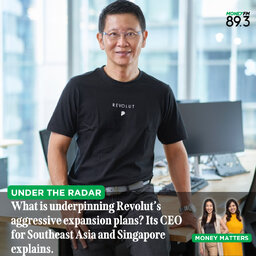Under the Radar: Moroccan-based phosphate fertiliser maker OCP Group on how climate change influences demand, opportunities in Southeast Asia and more
Phosphate provides a quarter of all nutrients plants need to grow and thrive. It is an essential ingredient in all fertilisers that go to support the crops we eat and use in our daily lives.
And it is all about phosphate today as we speak to one of the world’s largest custodians and suppliers of phosphate-based fertilisers.
Founded over a century ago in Morocco, our guest OCP Group started out as a single mine producing phosphate at Khouribga. Production started in March 1921, with exports done via the port at Casablanca done later that year.
The company diversified over the years, moving to phosphate processing at Safi in 1965 and in Jorf Lasfar in 1984. It also became a state owned company under the Moroccan Government in 2008 and the Banque Populaire du Maroc.
Fast forward to today, the firm’s operations now span across five continents and throughout the value chain ranging from mining, processing, manufacturing, exporting to even education and community development. Just to give you a sense of its scale, OCP now has sole access over 70% of the world’s phosphate reserves.
Some of its products include raw materials like rock phosphate, phosphoric acid, standard and fortified fertilisers, as well as animal feed.
Per the Moroccan World News, the firm reported revenues of 91.27 billion Moroccan Dirhams (or MAD or US$9 billion) in 2023, despite a drop in fertiliser prices. That is lower than the US$11.3 billion in the year prior. But which are the firm’s major demand markets contributing to the numbers and what is the role of Singapore in this regard?
And with poor weather conditions affecting the yield of crops like cocoa and Robusta coffee beans – what implications will this have on fertiliser makers?
Meanwhile, the firm had in April raised US$2 billion in a dual tranche Eurobond to fund its green transition plan, but what can we expect here in Southeast Asia?
On Under the Radar, The Evening Runway’s finance presenter Chua Tian Tian posed these questions to Bhavya Sehgal, General Manager, Singapore, OCP Group.
 Under The Radar
Under The Radar




